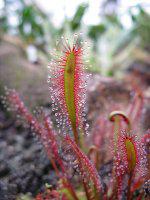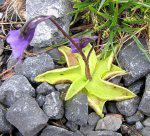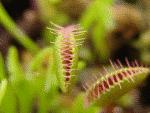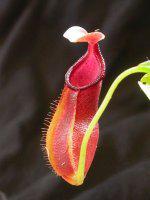
Cape Sundew Every animal on Earth depends on plants in one way or another in order to successfully survive in it's surrounding environment - whether that is herbivores nibbling on them or Cheetahs using the long grasses to hide in, or even just relying on the oxygen that plants release into the air. There are plants however, that actually depend on the digestion of animals in order to gain the necessary nutrients that they need to survive.
Of the more than 250,000 flowering plant species found all around the world, 630 of them are known carnivores. Generally found in warm, acidic bogs where there is constant moisture along with plenty of sunlight, carnivorous plants thrive in these low-nutrient soils and have little competition for growing space from other species. Although these wet, sunny bogs are their preferred habitats, a number of carnivorous plants are also found along desert outskirts and on limestone cliffs.

Common Butterwort Carnivorous plants (like varying animal species) have all adapted and evolved slightly differently to their surrounding environments. They do however, all use some kind of trap to secure their prey which may be either moving or stationary depending on the species. Five basic trapping mechanisms are utilized by carnivorous plants which are: Pitfall Traps - trap prey in a rolled-up leaf which houses a sticky pool of digestive enzymes. Snap Traps - trap prey between their leaves by snapping them quickly shut when triggered. Flypaper Traps - trap prey on a sticky glue-like substance which is secreted from glands in the leaves. Bladder Traps - trap prey by using an internal vacuum generated by the bladder to suck it in. Lobster-Pot Traps - trap prey in a hairy area where it is forced to move towards a digestive organ.

Venus Flytrap Movement The Venus Flytrap is probably the most famous of all carnivorous plants, and although now found all around the world, they are native to the acidic bogs of North and South Carolina. Venus Flytraps typically catch Insects and Spiders by snapping their large leaves shut when the animal makes contact with one of the sensitive hairs that line the inside of the Venus Flytrap's leaves. Despite their popularity, they are now considered to be a Vulnerable species in their natural environment.

A Pitcher Plant Pitcher Plants are also very well-known for their carnivorous habits, and catch their prey in a very different way, allowing it to slip down into one of the plant's rolled leaves, which has a pool of digestive enzymes at the bottom. There are nearly 120 different Pitcher Plant species generally found throughout the world's tropics, although not all of them are carnivorous. They are mainly found in habitats where the soil is very low in nutrients - places where many plants cannot survive.





